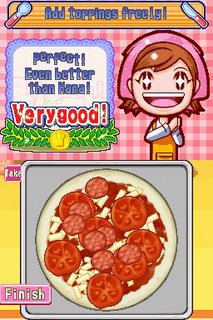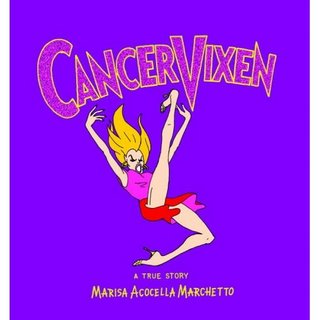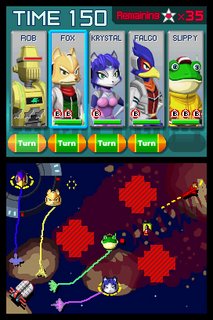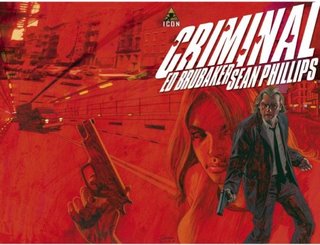Time once again for our big "director's cut" interview, this time with "Chicken With Plums" author Marjane Satrapi. I had the opportunity the other week to speak with her about her about her new book and her upcoming film adaptation of "Persepolis." I found her to be an extremely pleasant, thoughtful and energetic, to the point where I had trouble holding up my end of the conversation. Ergo, any errors in the transcription are purely due to my own stupidity and slow-wittedness.
 Q: Tell me a little bit about the film. How’s it coming along?
Q: Tell me a little bit about the film. How’s it coming along?A: It’s going fine. We have almost finished it. I mean, it’s going to be really finished because you have to make the soundtrack and the whole mixing and everything. So it’s going to be finished next week because we want to debut it for the first time at the Cannes Film Festival 2007 in May. ... I’ve been working on it for 2 and a half years and I have another seven, eight months to work on it.
Q: Are you happy with how it’s turning out so far? A: Really, really extremely happy. ... I wanted a black and white movie, really not the Walt Disney style. The result is really fantastic. I am doing it with my best friend. We co-wrote and co-directed the movie together. We were saying if what is in our mind, they can make 70 percent of it I would be really happy, but I should say that now it is much more than the 70 percent. So yes, I’m very, very satisfied by the result.
Q: Now you said you co-wrote and co-directed it. How did that division of labor work? A: It’s very hard to say because my friend and I, we have been tied together. The eyebrow looks like him but then the thickness of the eyebrow looks like mine. It has 50 percent of each of us, which make it ... more poignant. It goes beyond what the book was. I cannot exactly tell you, but we always talk about everything. He will say an idea and I will say an idea and the mixture of all of that will make things happen. We are two very big egomaniacs and we have such big egos we cannot fight together. The whole relationship is based on respect. We’ve known each other for a very long time also. What I would say is a dream team actually. I really enjoy working with him. That’s why we want to continue working together.
Q: How closely does it adhere to the original graphic novel?A: Well it’s extremely close actually. The narration in the movie is very, very different to the narration in the comic. Absolutely not the same way of telling the story so to make it as a movie we had to add some information of course. But we also had to take out some information because you can not do everything. If you count in a very mathematical way each page of comic respond to one minute of a movie. This comic is about 380 pages so we could not make a movie of more than six hours, it’s impossible.
But we tried really to put the whole thing in there. ... With the soundtrack, with the voices, everything takes a dimension that you don’t have. But it’s very close and true to it. .. All of it is actually in there.
Q: Moving on to “Chicken With Plums,” what made you want to tell this particular story? A: After “Persepolis” and “Embroideries” which were really ... I mean “Embroideries was really my answer to the world. I heard so many mistakes and misjudgements about our people and our culture. I wanted to give another version of the story, the way I saw it. “Embroideries” was more of a conversation.
I really wanted to write a love story. I got attracted by this idea of death because death is part of life. I visited my own uncle and he had a picture of his uncle, who was my great-uncle. The man was extremely good-looking, so I got inspired and ... the only truth in the story is that he was a good musician and he died for some reason that nobody really knows. I made up a whole story around that.
I wanted to write a book about poetry. I wanted to write a book about death. I wanted to write a book about who the artist is, because the artist is extremely egocentric, extremely narcisstic, like myself, but at the same time we’re charming, you know? The main character, Nasser Ali Khan, he’s really a pain in the ass. (laughter) Unbearable.
Q: That’s true actually. A: At the same time he’s extremely charming. You are attracted to him. You understand what he is saying.
I also wanted to talk about the notion of pleasure, the pleasure of smoking, the pleasure of making love, to be in love. The pleasure of eating. For me really, the whole procedure of dying starts from the second that this man cannot eat anymore. Even the thing that he likes the most in his life, the last instinct, the last pleasure that we lose is the pleasure of eating.
I really wanted the book to look like eight days of life. I made all these very small drawings. ... I could make them bigger and the book was going to be much thicker. But that was not the purpose really. What I wanted was that the book would look like eight days of life. Eight days of life is really short and at the same time very dense. That’s why I put everything extremely narrow, very close to each other. Because I wanted just by the format of the book that you would have the feeling of this very short and very dense period of time.
Q: When you decided to tell this story, did you have to do a lot of research? Did you have to interview family members to try to find out more about your great uncle? 
A: Oh not really, not really. The facts are true, but the thing is if I say something about someone, it’s not like all of these things have happened to this person.
First of all, I changed the name and I changed the figures and everything. The person is really the mixture of a couple of stories who belong to different people. All of them are true, but at the same time, the mixing of it are not true. There are things like the Angel of Death. Nobody has seen him, so it can not be a true story.
As a child I was very much friends with the old people in my family. which was extremely unbearable for other people. Old people, they have a special way to tell their story. They make it extremely long, they repeat themselves five billion times and normally nobody can stand that. That’s exactly what I liked about it because I wanted to know all the details. I would ask the questions over and over ... and I was very interested. I heard lots of stories as a child. This was my big treasure. That is what I can really lean on and count on.
It was not so much a matter of research as my biggest problem was to make the structure of the story [work] because as you know the story is really like a puzzle. And at the end all the pieces of the puzzle should be together so you can understand what has happened. So the structure of the story was the thing that took most of my time.
That was a big challenge. The first time that I talked about the story with a friend of mine he told me, “This is a script for a movie and you cannot do it into a comic.” I said, “I will make it into a comic because I want to see if it’s possible.” That’s my energy for my work, it comes from that.
[With] “Persepolis,” I know how it works, I’m not interested in making another “Persepolis” ever. I always want a new way of narration. That is what is interesting for me. If the research is not there, the research of “How am I going to present this story, how am I going to make the book even look like" — because the format of the story is very important that it looks like a story. The whole layout, that is what pushed me to work. I wanted to make something new.
Q: The structure was one of the things I enjoyed most about the book, especially the way you start out with the incident where he meets the woman on the street and it seems like this small incident and you go back to it later at the end of the book; the way you circle it around. A: Yes.
Q: I appreciated that. There’s been a couple books that do that recently. It reminded me of a book that came out earlier this year called “Fun Home.” A: Yes, but I didn’t know that you know. I hadn’t seen that book before because actually [Chicken with Plums] was published in France in 2004.
The thing I think I was inspired the most with was the Inarritu movie, the one who made “21 Grams.” I love the way at the beginning you have the feeling that, what is this anecdote and it doesn’t lead anywhere, what does that mean? And all of these things get together and suddenly you have a story at the end.
“Chicken with Plums” is my favorite book. I never thought that I would have a favorite book of my own, but I do.
Q: It’s interesting you say that because obviously “Persepolis” would be a much more personal choice because it is you actual, personal story. A: But you know Chris I never think I have felt as free as when I wrote “Chicken with Plums” because the main character is a man. And everytime I draw a woman it is related directly to me. So I have a self-censorship that comes because I know that people will relate it to me indirectly.
But when it’s a man, a direct relationship is not made in a natural way, so that is where I can hide the best and that is where I can be myself the most. I think that in any book I have so much of myself as in this book because basically I consider myself a very charming person but unbearable at the same time.
Q: It’s interesting you say that because I was going to ask that question. “Persepolis” and “Embroideries” of course have a very overt political themes and, as you say, deal with women and gender issues, whereas “Chicken With Plums” doesn’t deal with those things in any overt way. A: Yes, but at the same time the story is also situated in the 50s, and, as you know, in the 50s, that is the moment that the Americans and British made a coup d’etat in our country. And that was in 53 and I mention it in the book. That was the end of the dream. And the end of Nasser Ali Khan’s dream happened at the same time. It’s somehow related in a way, but you are right when you say it is not specifically political.
It’s not so much that I’m so much interested in politics. It’s the politics that is interested in me and in you. I mean, if the politicians would make their decision and pay the check themselves, fine, I wouldn’t care less. The problem is that they decide, and you and I, we have to pay for that.
So other things, like love stories, of course I prefer them more. If I could have just written love stories I would have preferred that.
Q: You kind of answere the question already but I was wondering if in "Chicken with Plums" you wanted to get away far away from those themes and stretch you limbs a little.A: Yes. The thing is I like to write stories and sometimes I am a political artist and a political writer and all of that, but that is not the only thing that interests me in life. I would have hoped that the world would be in a way that I would be interested in other things than politics. Like, if the politicians ... didn’t abuse their power and would just take care of other things, cultivating ourselves and being nice to each other, I would have preferred that. But the situation pushed me to be interested in these things.
Q: One of the themes in the book seems to be miscommunication in the sense that if the characters had been more honest with themselves and more observant to what was going on around them, things might not have turned out the way they did.A: Yes, of course.
Q: I wanted to pull the main character out of the book and smack him at times.A: That’s it, that’s it. He fell in love with a woman he cannot marry and he marries a woman that he doesn’t love at all and this woman loves him. The whole thing is a misunderstanding. They don’t communicate, they don’t talk about the right things. That is true of many people. They don’t make the right choices and your life turns out to be a real tragedy. You’re completely right about that.
But most of life is very tragic because we are educated and grow up in a way not to follow our instinct because they will tell us all the time that we have to think about what we do and we have to make the right decision. What is really the right decision? From the moment you’re born they will tell you what you see is not really what you see, what you feel is not really what you feel. You have to intellectualize everything. Maybe it’s better to follow what we really feel. Making the logical decision, like the mother telling him “you should marry this woman she’s in love with you.” First of all the most important thing is that you have to love her. If you don’t love her of course it’s going to become a tragedy at the end.
Q: I was also thinking of his children and how they come to see him and he gets upset because they don’t seem respectful. I remember thinking at the time, “well no kidding, they’re little kids.”A: Exactly.
Q: And then later he doesn’t pay attention to the fact of how much his younger son adores him. That was the moment where the book hit home for me.A: Yes, and for me too. I have seen that many times with families that have lots of kids. Always in a family you have the kid that everybody loves and the kid that nobody loves. And everybody will of course pretend the contrary, that they love all their kids, etc., and normally it happens that the kid that less loved is the kid that loved them the most. But nobody wants to see that.
Q: You were talking about with “Embroideries” how you wanted to correct people’s misjudgements about Iranians and Iran. What do you think is the biggest mistake or misjudgement Americans have about Iran?A: The biggest misjudgement is that we are not considered a human being. We are considered as an abstract notion. Either we are the 1,001 nights, this old country with this old country with the flying carpets or we are the terrorists and we are completely crazy.
It’s neither one nor the other. Even in a democracy the president doesn’t represent the whole population. Does Bush represent all the Americans? No, of course not. Thank god of course.
But imagine in a country like Iran that is called a dictatorship. Of course our government can not represent us because if it was representing us, that would be the biggest democracy in the world and it’s not. You can not take the misjudgements of a few idiots and say the whole population is like that. You have to consider they are people just like you, they would like to go eat a hamburger and go to the movies and go on vacation and they aspire for peace.
For America, 9/11, all the terrorists that were attacking, they were either Pakistanis or Saudi Arabia. And Pakistan and Saudi Arabia, they are America’s best friends. I don’t know how Iranians, North Koreans and Iraqis became the Axis of Evil when even not one of the terrorists was from one of those countries. I’m there and I’m like, “Why Us?” Bin Laden is Saudi Arabian. The Taliban came from Pakistan and they have been defeated by the American government. Why is it me, the axis of evil? What did I do? Why me? I am living in France, why am I also the axis of evil? It’s just completely crazy.
Q: What do you think can or should be done to ease tensions and relationships between the U.S. and Iran? That’s a loaded question I know but ...A: This whole idea of going and bringing democracy to places by bombing them is completely odd. Democracy is not something that you can bring somewhere. Democracy is a cultural change. It is an evolution to democracy.
The American government is behaving like a big gangster. They say if you give me your money, I will protect you. The relationship with Saudi Arabia, for example. And if you don’t do that I am going to come and break your teeth. And that’s what they do. So that is really the policy.
In 1999 for the first time I came to America. And I grew up under the Islamic regime, believing that American people were the worst people in the whole world. I came to America the first time to hate all the Americans. And I got a big slap in my face because it was not like that. And the second [visit] it was better and better and better to the point that me, who is considered axis of evil, I am the one who defends Americans in France. Can you believe that? That is the height of irony.
And why is that? That is because I know who the American is. I think you can support the democratic movement within the countries. The Iraqi opposition, they have been in Europe for 30 years, nobody ever listened to them. If you have the people who want to change in the country, then you can do something. But invading a country you will always be the enemy. If you want to fight a dictorship, then the American government should go and bomb China because that is the biggest dictatorship in the whole world. Why do they invest billions of dollars over there? If it’s a question of human rights, then let’s make war with 80 percent of the countries in the whole world because 80 percent of the countries, they are dictatorships. And if it’s not, then don’t pretend that it’s for our own good.
Q: I know you haven’t been to Iran in a long time, but do you see things improving there?A: I am far from being a feminist I should tell you, but to look at the situation in a place you should see the situation of the women. Because the biggest enemy of democracy is a patriarchal culture. In the family, the father would have the last world, in a country, the dictator has the last word because the dictator is the father of the nation.
In my country for 27 years the women had half of the rights of the men. But at the same time, 64 percent of our students are women and in 25 years, the amount of the working population, the women working, has multiplied by four or five. So you see that this country is on its way to get modern.
This is a long procedure, these women that get educated, that start working. That is exactly what happened in the West. The democracy came from the second the women started getting instructed, they had the right to vote. This equality is the basis of democracy then the justice will become equal for everybody and the law will become equal for everybody. So this procedure is there. Iranian people are modernizing and they are very far from the government that doesn’t repress them at all, but this whole procedure should not be stopped by American bombs. Each bomb will put us a couple of years behind.
Believe me, I love America and I love American people and if there was no George Bush I would have come and I would have lived here.
Q: Last question, and it’s kind of a comic nerd question. Recently the news broke about Lewis Trondheim and Joan Sfar leaving L’Association. Can I get you to comment on that at all?A: Well you know they are superstars in France and L’Assocation is my publishing house, made by six artists who couldn’t be published somewhere else in the late 80s. And I’m very happy that the cartoonists are also being published in America. Because we in France, we know lots of American cartoonists, people like Daniel Clowes, Chris Ware, Joe Sacco, Art Spiegelman. These people have been translated and are very appreciated in France. I’m very happy that this reprocity of the culture exists. It’s very good news.
Q: Oh yes. I remember hearing about David B’s work and trying to track it down in America a couple of years ago ...A: It was impossible. And now it’s possible, which is very good news.
Q: But what do you think that means for L’Association that Trondheim and David B left ...A: Yes and I come from L’Association. They tried to make other kinds of comics, intelligent comics, and I think that’s probably why it works. It’s a work of quality. In long term quality always pays. In short term maybe not, but in long term quality is always the thing that wins.
Q: Do you think it’s going to hurt L’Association that these people are going to be leaving and doing work elsewhere?A: Oh no. L’association is really a whole thing in France. No, not at all. ... I’m extremely faithful to L’Association for example, and I know many other people are so I don’t think it’s going to hurt anyone. ... Don’t worry, everything is fine.






















